A quadrilateral with two sets of parallel opposite sides is called a _____________________.
What is: Parallelogram
True or False: A trapezoid is a type of parallelogram.
What is: False
Find the missing angle in the trapezoid shown.
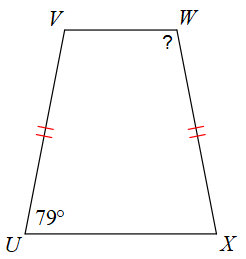
What is: 101 degrees
What is the distinguishing feature of a rhombus?
What is: 4 congruent sides
The diagonals in parallelograms ___________ each other.
What does that word mean?
Bisect = cut each other exactly in half
A quadrilateral with four congruent sides and four congruent angles is called a __________________.
What is: Square
The four interior angles of any quadrilateral add up to ______ degrees.
What is: 360 degrees
Find the missing angle in the parallelogram shown.
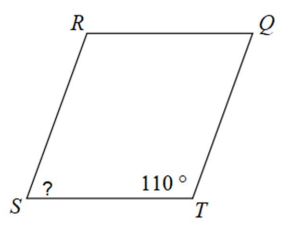
What is: 70 degrees
Solve for x in the square shown.
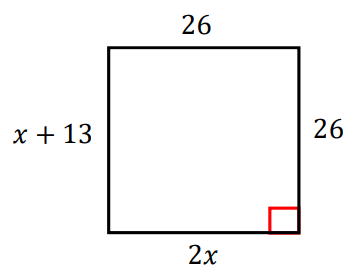
What is: x = 13
Solve for x in the square shown.
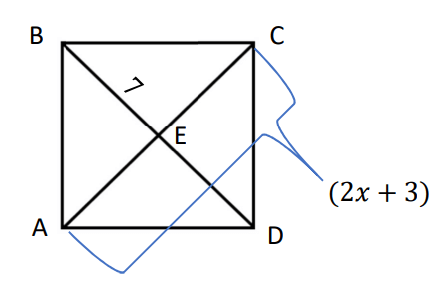
What is: x = 5.5
The two congruent sides of an isosceles trapezoid are called __________.
What is: Legs
True or False: Consecutive angles in parallelograms are complementary.
What is: False
Solve for x in the parallelogram shown.
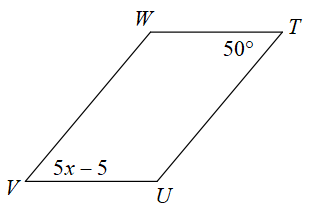
What is x = 11
Solve for x in the rhombus shown.
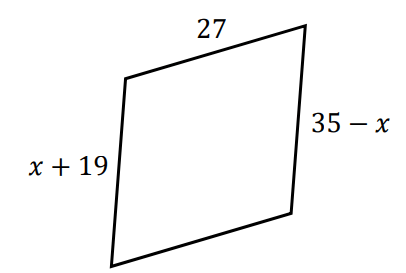
What is: x = 8
Find x.
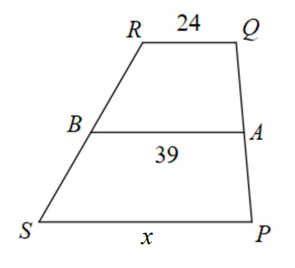
What is: x = 54
Define a midsegment (of a trapezoid).
What is: A segment that connects the two midpoints of the trapezoid's legs.
Which quadrilaterals have diagonals that bisect each other? Select all that apply.
(a) Rhombus
(b) Rectangle
(c) Trapezoid
(d) Parallelogram
What is: a, b and d
Solve for x in the trapezoid shown.
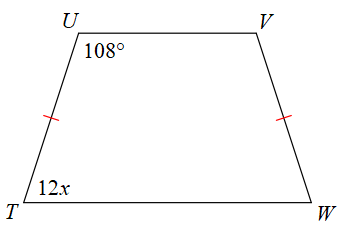
What is: x = 6
Solve for x in the rectangle shown.
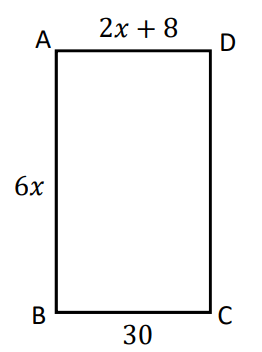
What is: x = 11
Solve for x in the trapezoid shown.

What is: x = 6
A quadrilateral with five sides is called a _______________.
What is: Does not exist
The two base angles of an isosceles trapezoid are:
(a) congruent
(b) supplementary
(c) complementary
What is: (b) congruent
Find the missing angle in the parallelogram shown. 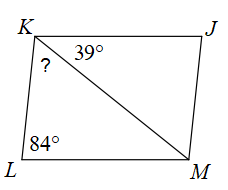
What is: 57 degrees
Solve for TS in the parallelogram shown.
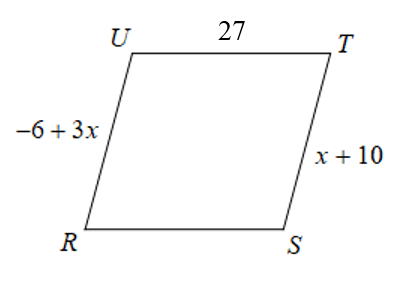
What is: TS = 18
Solve for x in the parallelogram shown.
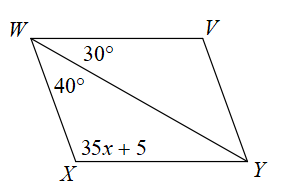
What is: x = 3